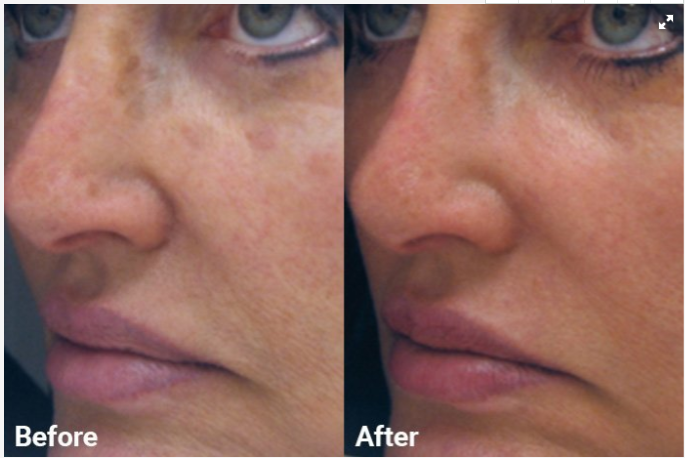Laser resurfacing is a facial rejuvenation procedure that uses a laser to improve the skin's appearance or treat minor facial flaws. It can be done with:
Ablative laser. This type of laser removes the thin outer layer of skin (epidermis) and heats the underlying skin (dermis), which stimulates the growth of collagen — a protein that improves skin firmness and texture. As the epidermis heals and regrows, the treated area appears smoother and tighter. Types of ablative therapy include a carbon dioxide (CO2) laser, an erbium laser and combination systems.
Nonablative laser or light source. This approach also stimulates collagen growth. It's a less aggressive approach than an ablative laser and has a shorter recovery time. But the results are less noticeable. Types include pulsed-dye laser, erbium (Er:YAG) and intense pulsed light (IPL) therapy.
Both methods can be delivered with a fractional laser, which leaves microscopic columns of untreated tissue throughout the treatment area. Fractional lasers were developed to shorten recovery time and reduce the risk of side effects.
Laser resurfacing can lessen the appearance of fine lines in the face. It can also treat loss of skin tone and improve your complexion. Laser resurfacing can't eliminate excessive or sagging skin.
Laser resurfacing can be used to treat:
Fine wrinkles
Age spots
Uneven skin tone or texture
Sun-damaged skin
Mild to moderate acne scars
Treatment
Fractional Laser Skin Resurfacing can be quite uncomfortable, so a topical anaesthetic cream can be applied 60 minutes prior to the session and/or you can take two paracetamol tablets 30 minutes beforehand. Usually our patients experience some slight warmth from the laser’s pulse, and there can be a sunburn-like sensation after the treatment ( for up to 3 to 4 hours), which can easily be dealt with by applying a gentle moisturiser.
There are generally about 7 to 10 days of downtime after you receive this treatment. You will likely experience some immediate redness, which should subside within a few hours. This, and any other immediate side effects, can be neutralised by applying ice-packs to the treated area immediately after the procedure and for the rest of the day.
For the first 3 to 4 days after Fractional Laser treatment, your skin will be fragile. Take special care when you wash your face during this time – and avoid using facial scrubs, washcloths and buff puffs. You should already notice your skin looking better by this point, and the results will continue to improve over the following months.
You must use a broad spectrum SPF 30+ sunscreen every day to prevent further damage.
Laser resurfacing can cause side effects. Side effects are milder and less likely with nonablative approaches than with ablative laser resurfacing.
Redness, swelling, itching and pain. Treated skin may swell, itch or have a burning sensation. Redness may be intense and might last for several months.
Acne. Applying thick creams and bandages to your face after treatment can worsen acne or cause you to temporarily develop tiny white bumps (milia) on treated skin.
Infection. Laser resurfacing can lead to a bacterial, viral or fungal infection. The most common infection is a flare-up of the herpes virus — the virus that causes cold sores. In most cases, the herpes virus is already present but dormant in the skin.
Changes in skin color. Laser resurfacing can cause treated skin to become darker than it was before treatment (hyperpigmentation) or lighter (hypopigmentation). Permanent changes in skin color are more common in people with dark brown or Black skin. Talk with your doctor about which laser resurfacing technique reduces this risk.
Scarring. Ablative laser resurfacing poses a slight risk of scarring.
In fractional laser skin resurfacing, a device called a fractional laser delivers precise microbeams of laser light into the lower layers of skin, creating deep, narrow columns of tissue coagulation. Coagulated tissue in the treatment area stimulates a natural healing process that results in fast growth of healthy new tissue.
Post time: Sep-16-2022

